Google CloudSQL Postgres Source Setup Guide
If you use one of the supported providers (in the sidebar), please refer to the specific guide for that provider.
Supported Postgres versions
Anything on or after Postgres 12
Enable Logical Replication
You don't need to follow the below steps if the settings cloudsql. logical_decoding is on and wal_sender_timeout is 0. These settings should mostly be pre-configured if you are migrating from another data replication tool.
Click on Edit button on the Overview page.
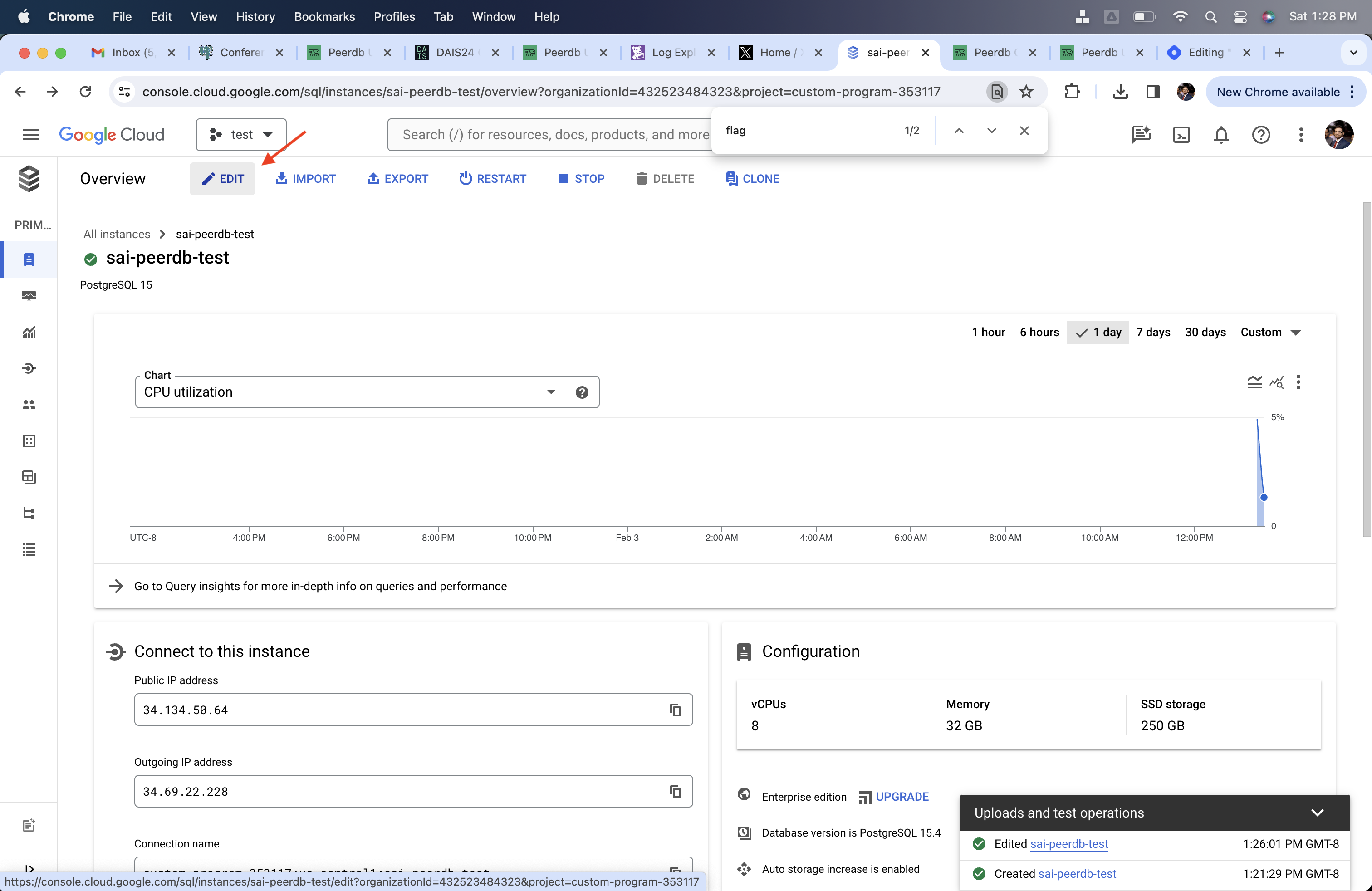
Go to Flags and change
cloudsql.logical_decodingto on andwal_sender_timeoutto 0. These changes will need restarting your Postgres server.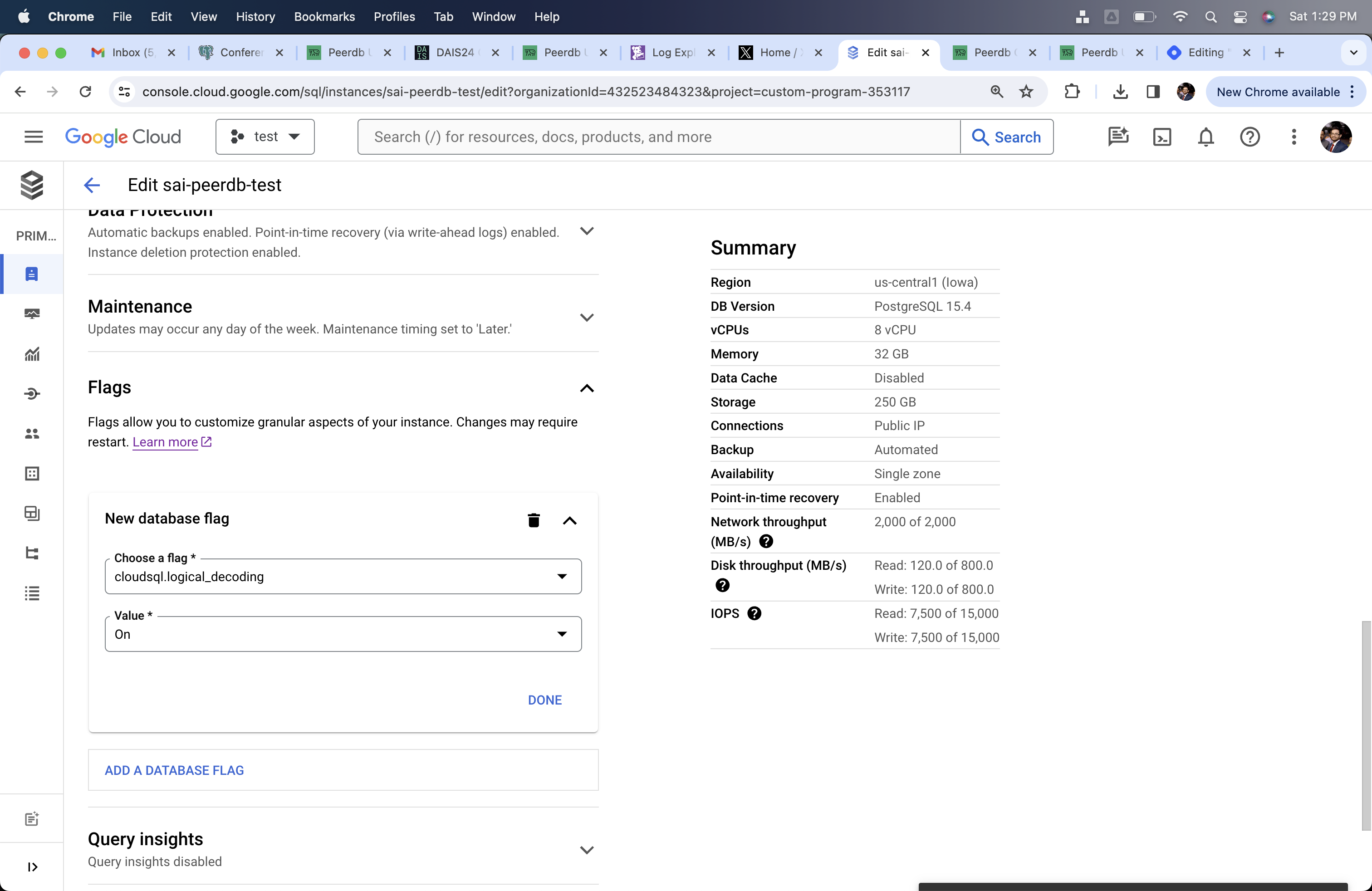


Creating ClickPipes User and Granting permissions
Connect to your CloudSQL Postgres through the admin user and run the below commands:
Create a Postgres user for exclusively ClickPipes.
CREATE USER clickpipes_user PASSWORD 'some-password';Provide read-only access to the schema from which you are replicating tables to the
clickpipes_user. Below example shows setting up permissions for thepublicschema. If you want to grant access to multiple schemas, you can run these three commands for each schema.GRANT USAGE ON SCHEMA "public" TO clickpipes_user;
GRANT SELECT ON ALL TABLES IN SCHEMA "public" TO clickpipes_user;
ALTER DEFAULT PRIVILEGES IN SCHEMA "public" GRANT SELECT ON TABLES TO clickpipes_user;Grant replication access to this user:
ALTER ROLE clickpipes_user REPLICATION;Create publication that you'll be using for creating the MIRROR (replication) in future.
CREATE PUBLICATION clickpipes_publication FOR ALL TABLES;
Add ClickPipes IPs to Firewall
Please follow the below steps to add ClickPipes IPs to your network.
If your are using SSH Tunneling, then you need to add the ClickPipes IPs to the firewall rules of the Jump Server/Bastion.
Go to Connections section
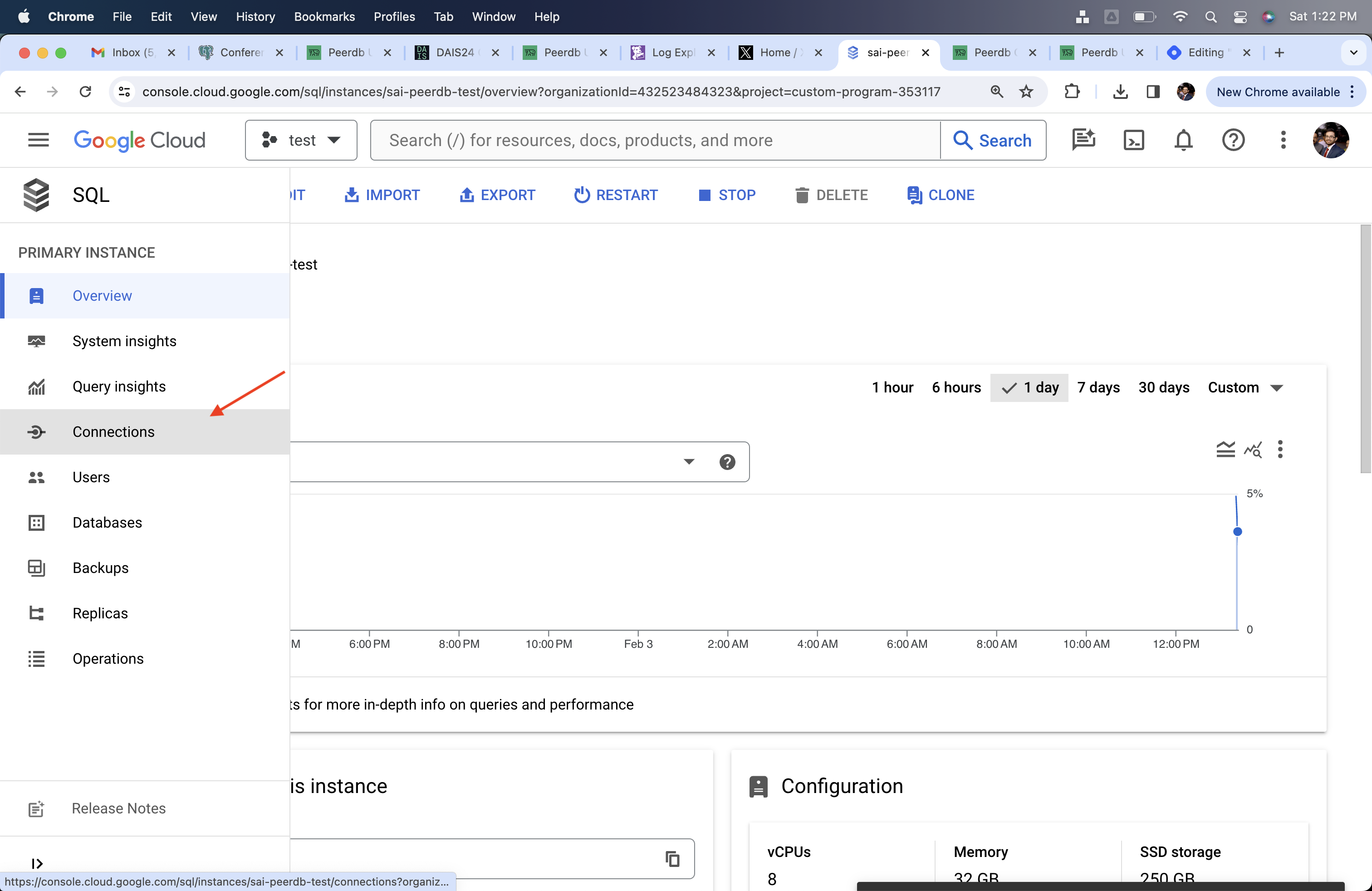
Go to the Networking subsection
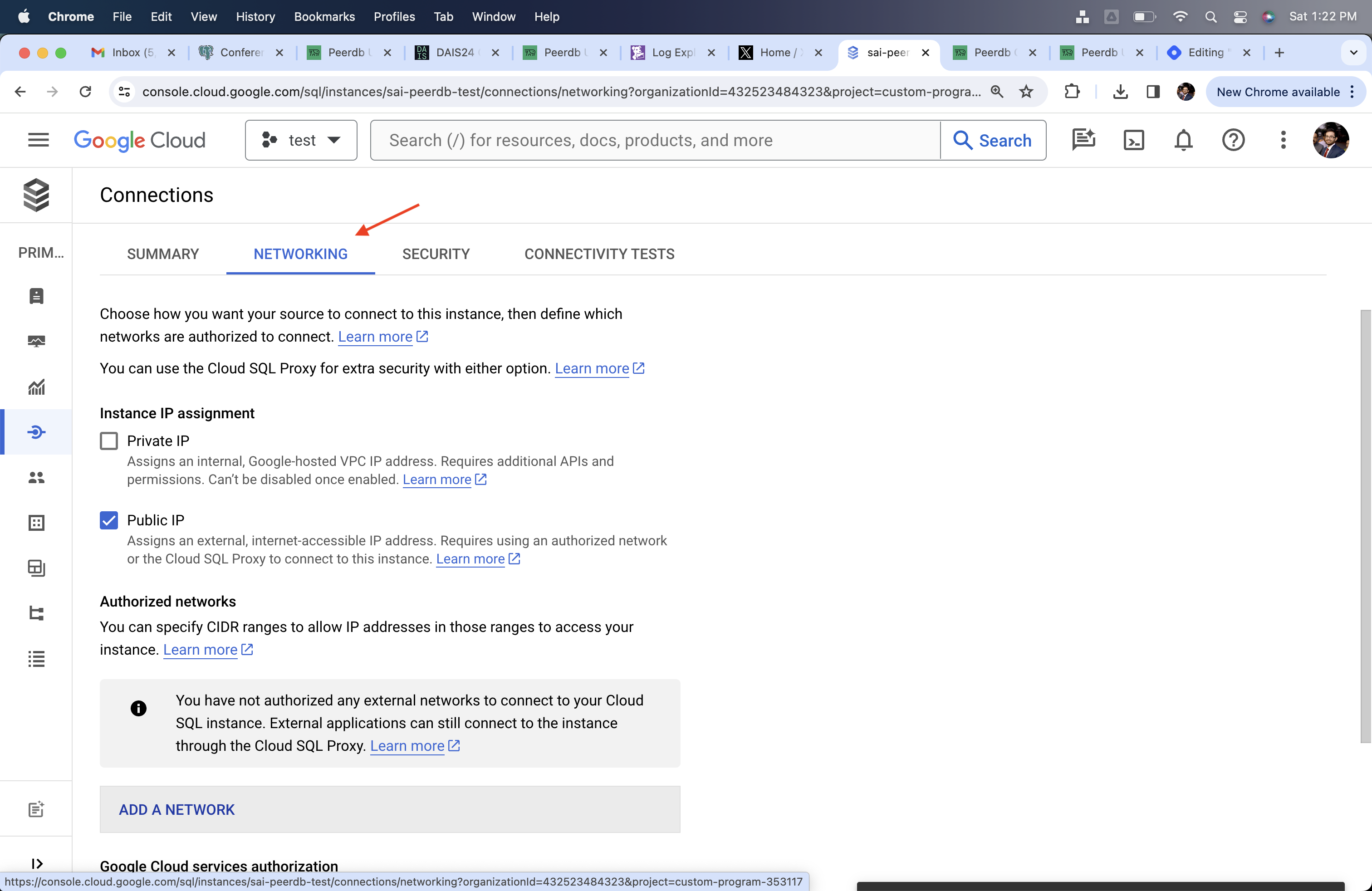
Add the public IPs of ClickPipes
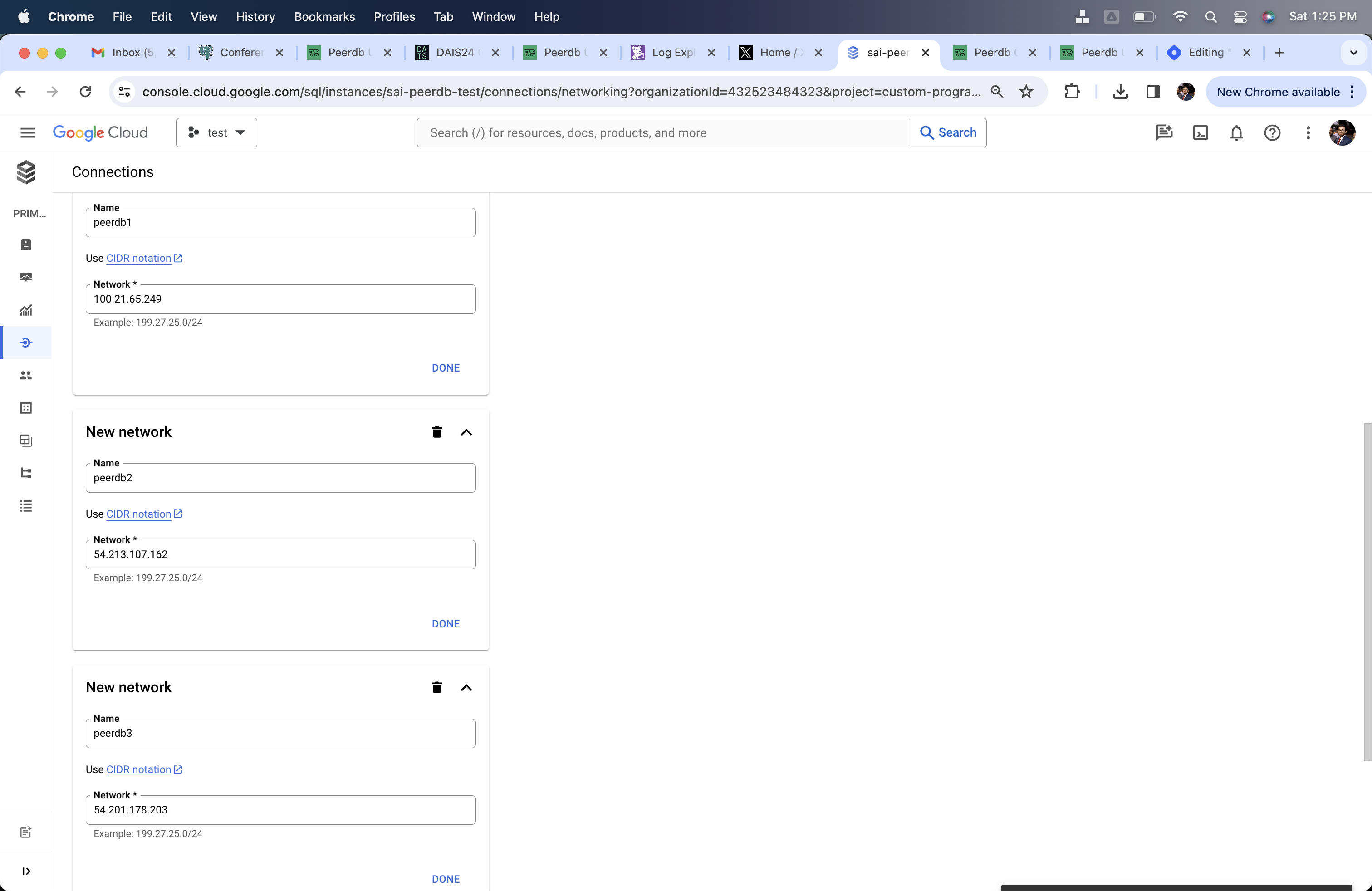
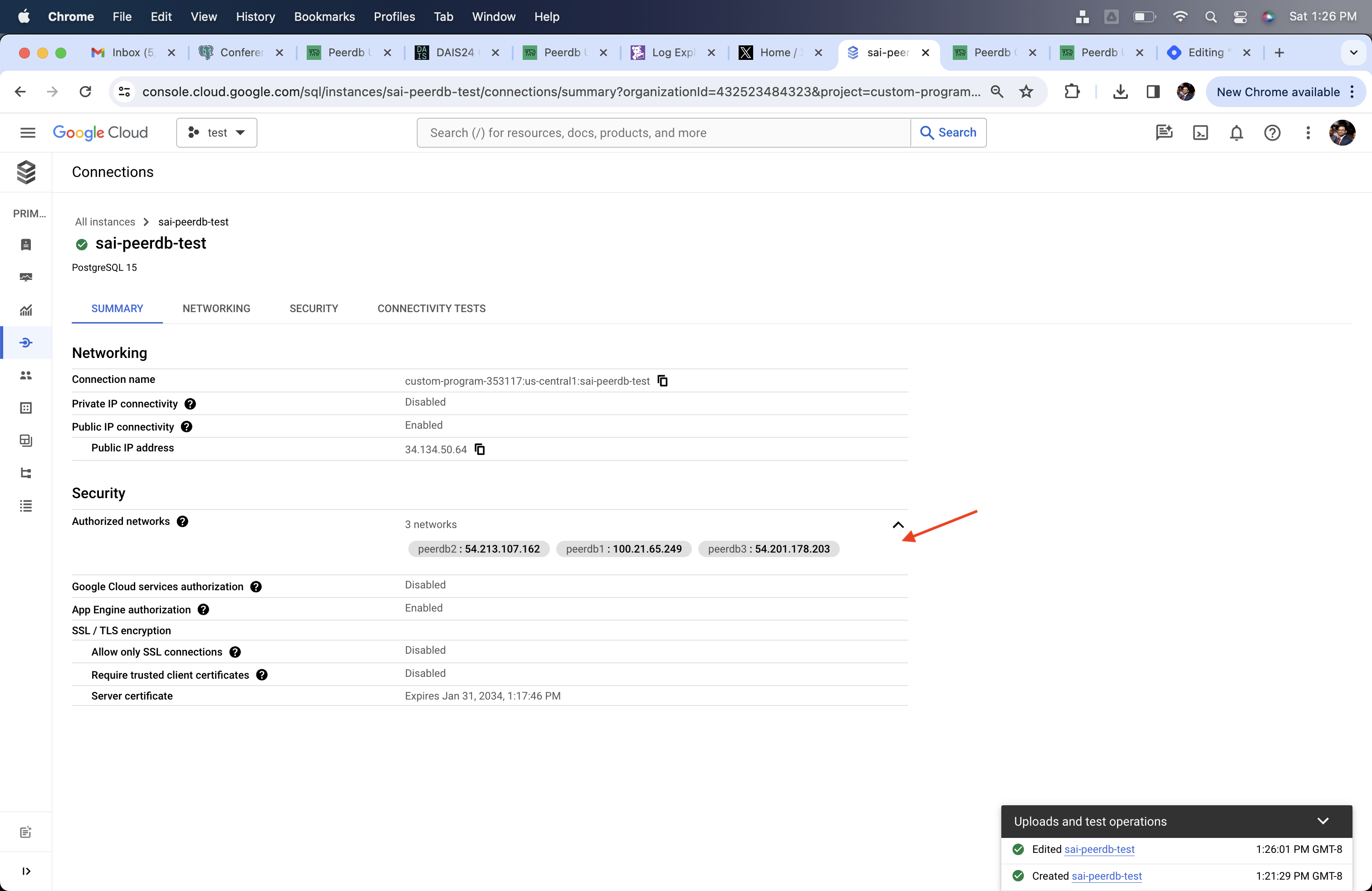
What's next?
You can now create your ClickPipe and start ingesting data from your Postgres instance into ClickHouse Cloud. Make sure to note down the connection details you used while setting up your Postgres instance as you will need them during the ClickPipe creation process.